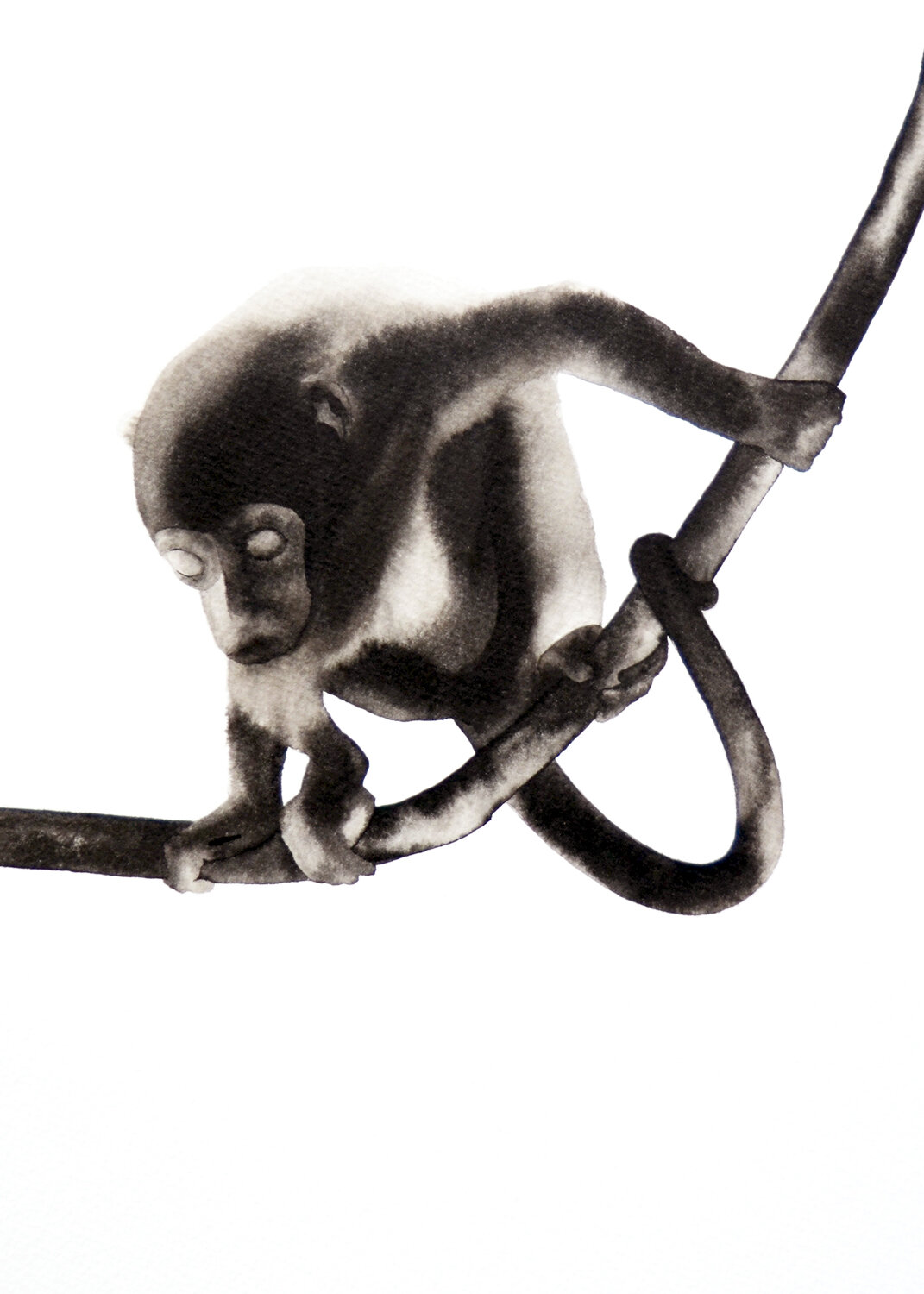
‘I tried very hard to imagine what to expect prior to arriving at Ambue Ari. Nothing could have prepared me for the never-ending layers of green, the surround-sound symphony of trilling and humming insects and creatures, or the sense of community amongst the volunteers who expend their energy, caring for the rescued creatures that they formed indelible bonds with’
In 2013 I travelled to Bolivia to spend time as resident artist at C.I.W.Y - an international NGO that works in defence of animal rights and for ecological awareness.
C.I.W.Y has three centres across the country, run by permanent staff and International volunteers; a home and rehabilitation centre that rescues a myriad of animals that fell victim to the illegal wildlife trade.
I spent nine weeks living at Ambue Ari, the largest refuge which is set on 800 hectares of biologically diverse forest in the Guarayos region.
The centre specializes in caring for howler monkeys, a variety of bird species and wild felines, including ocelots, pumas and jaguars. In the Inti Wara Yassi Parks animals and humans live together, forming close bonds.
For more information about C.I.W.Y visit intiwarayassi.org
The Bolivian Eastern Lowlands is one of the most biologically diverse regions on Earth, six different types of natural forest dominate more than 65 percent of the land cover, accounting for 75% of all forest in Bolivia. Parque Ambue Ari is part of the tropical dry forest called the Chiquitano, located at a crossroads where the humid Amazon meets the arid Chaco regions.
The Chiquitano is one of the largest healthy areas of this type that exists and is considered globally outstanding for its biological distinctiveness. The still little known complex and fragile forest is one of the most threatened eco-regions in the world.
Whilst at Ambue I had the distinct privilege of helping to care for and being in close proximity to some amazing animals. In particular there was Juancho, a Jaguar (Panthera onca) who will forever be in my heart.
Animals like Juancho are given a second chance at for a peaceful and more natural existence. The CIWY parks are not open to the public.
Prior to being at Ambue Ari, Juancho had spent his life at Santa Cruz Zoo in a 20 ft concrete enclosure without a single tree inside. When he arrived at the centre he had a serious eye infection that needed surgery. Partially sighted in one eye he adapted well to finding his way around the 150 foot, thick jungle enclosure where he could finally roam.
‘ Any volunteer lucky enough to care for this gentle creature falls in love with him. Despite all of his encounters with humans prior to his arrival at the centre he has a sweet and trusting nature. Within days spent in his company Juancho would greet me affectionately; flopping his body down next to me, rubbing his head against the enclosure between us, groaning and mewling as he allowed me to tentatively scratch his head. I constantly reminded myself that this was a creature with wild instincts and never approached these head scratches from his front. Spending time with Juancho, allowed me the privilege of an intimate insight into the behaviour and character of such a magnificent creature’
‘After about a month I couldn’t remember what was so necessary about the adornments of modern life - running hot water, electricity, internet, cold drinks or supermarkets - all seemed unimportant to the uniqueness of this way of life, to feel and know that you are part of something exceptional and far greater than yourself, and to have the privilege to live every day in the company of these exquisite animals and the passionate people that care for them.’
To The Trees : A Changing of Home
An exhibition at ONCA gallery in Brighton was a response to the experience. Through painting, drawing and photography, the work is an explores the threats facing the forest, and the creatures depending upon its survival for their own; an intimate portrait of both.


















